We inveterate romantics melancholy witness the inevitable replacement of love letters by long paragraphs from the keyboard of our mobiles. Fortunately, the Thyssen-Bornemisza National Museum remedy this nostalgia with his new exhibition: Artist Letters in the Anne-Marie Springer Collection.
Years ago, the letters were everything, the social networks in which share opinions and the private chats in which make confessions . A letter is capable of revealing a multitude of emitter traits through his calligraphy, the organization or the order of his writings.
Until September 25 , the museum allows visitors to discover the other side of some of the best-known artists in history. The 34 letters on display dialogue with 19 paintings from the permanent collection in a parade of messages from the handwriting of Delacroix, Manet, Degas, Monet, Van Gogh, Gauguin, Matisse either Frida Kahlo.
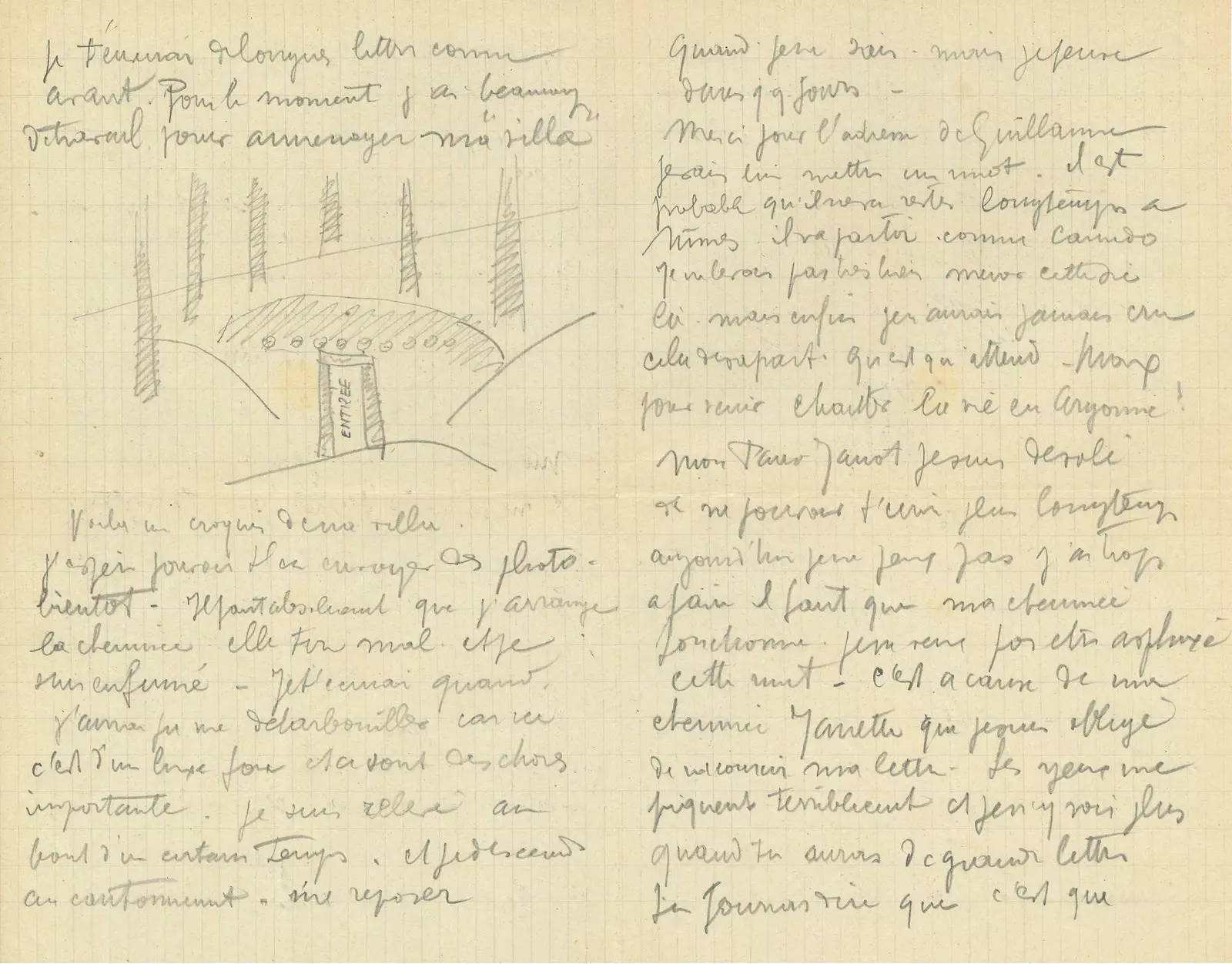
Fernand Léger wrote to Jeanne Lohy about the beauty of the Argonne Forest, despite the war (January 24, 1915).
WHO IS ANNE?
The sample includes jokes, insecurities, artistic criticism or fears shared in times of war, private feelings that today generate empathy towards the artist thanks to Anne-Marie Springer. Her collection of love letters started in 1994 , date that today she has granted a treasure of two thousand pieces.
Her fascination began with a letter from Napoleon Bonaparte to his wife Josephine . Her subsequent interest led her to opt for art and, specifically, painters . The relationship that exists between her work and her thought, as well as her remarkable pictorial style also in calligraphy, have been some of the reasons for her hobby.
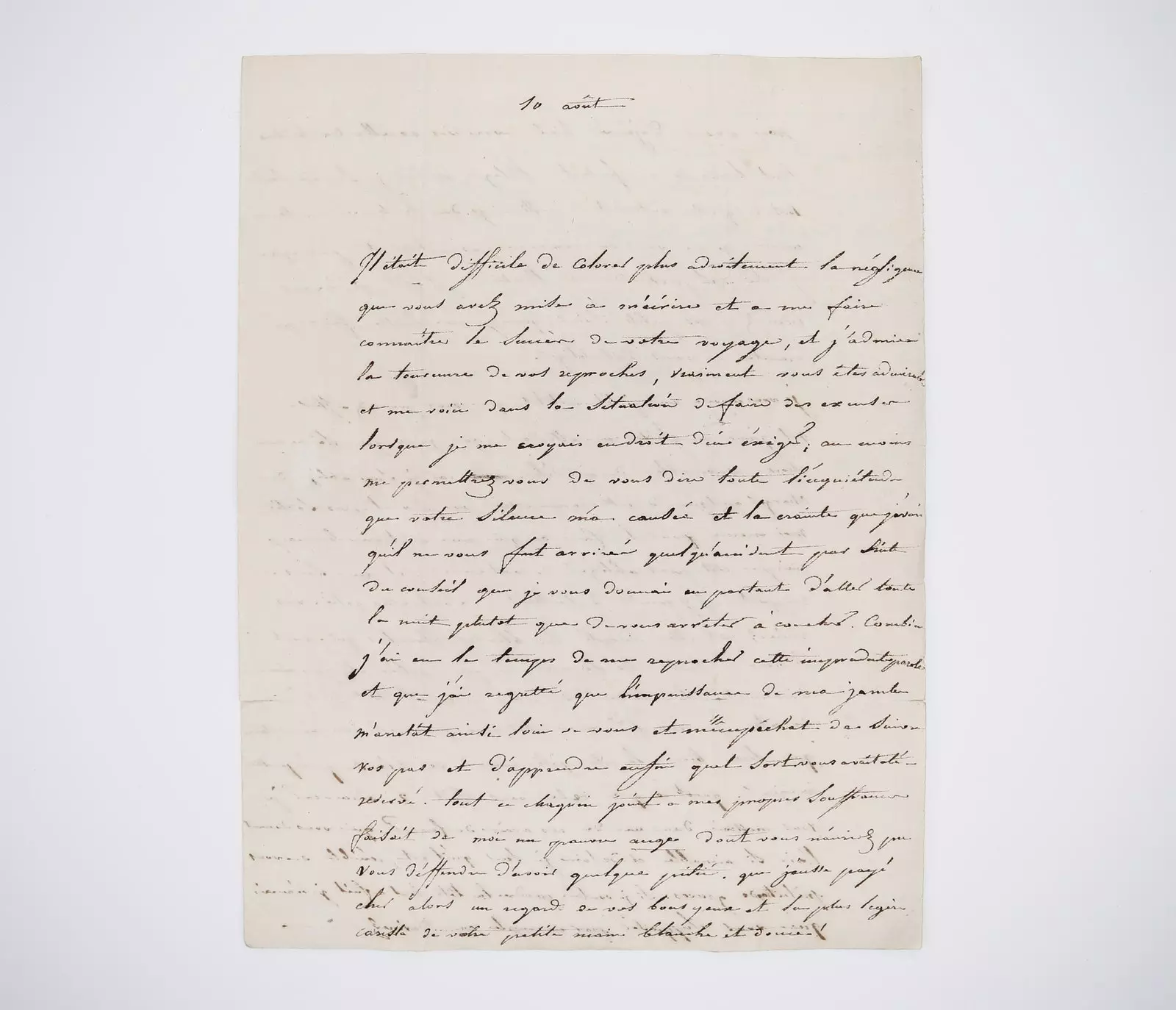
“Her absence from her makes me unbearable”, Théodore Géricault wrote to Madame Trouillard on August 10, 1822.
MORE THAN LOVE
Our admiration for artists comes of the follow-up of their works , those that they decided to share with the world. As if it were an Instagram from the past, her work showed us just a piece of their lives . We do not know their true opinions, their torments, desires or consolations, something that you would only tell your closest circle.
This card selection is an opportunity to humanize great figures who were at the top of the cultural pyramid. And if the raison d'être of the exhibition is mainly love, the artists also found the moment to capture on paper historical, literary, musical and artistic themes , even some of his sketches.
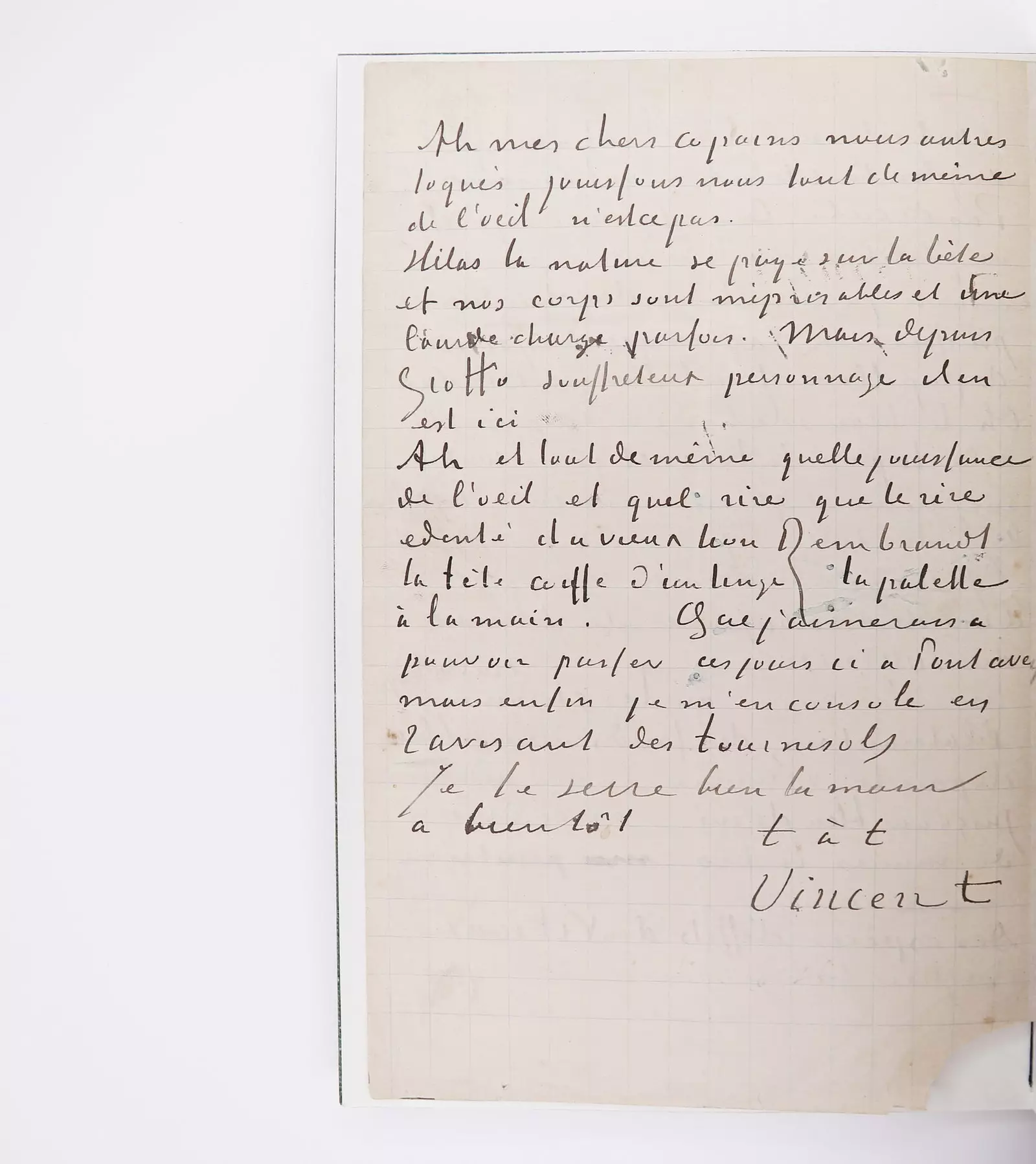
Van Gogh shared in his letters with Émile Bernard the love he felt for the light of the south of France (August 21, 1888).
THE ROUTE
The first stop, how could it be otherwise, we make it in love letters . In this set you can read moving phrases like the one written by Théodore Géricault to Madame Trouillard, “His absence from him makes me unbearable” , in the oldest letter of the exposed sample.
The writings are combined with the paintings of their authors . The postcard that Egon Schiele wrote to Edith Harms in 1915 from her military posting, after marrying her, appears next to her work Houses by the River. The old city (1914). They can also be seen in this section. those letters that Frida wrote to Diego Rivera about his health problems or issues in your relationship.
If we continue towards another of the great themes dealt with in the writings, we arrive at to the healing power of art . Many of the artists who wrote to each other alluded to how art managed to stir their emotions, and not just their own. It is hopeful to see how Delacroix wrote to his friend Charles Soulier in 1850 to express the rejuvenating effect that works by Rubens produced in it.
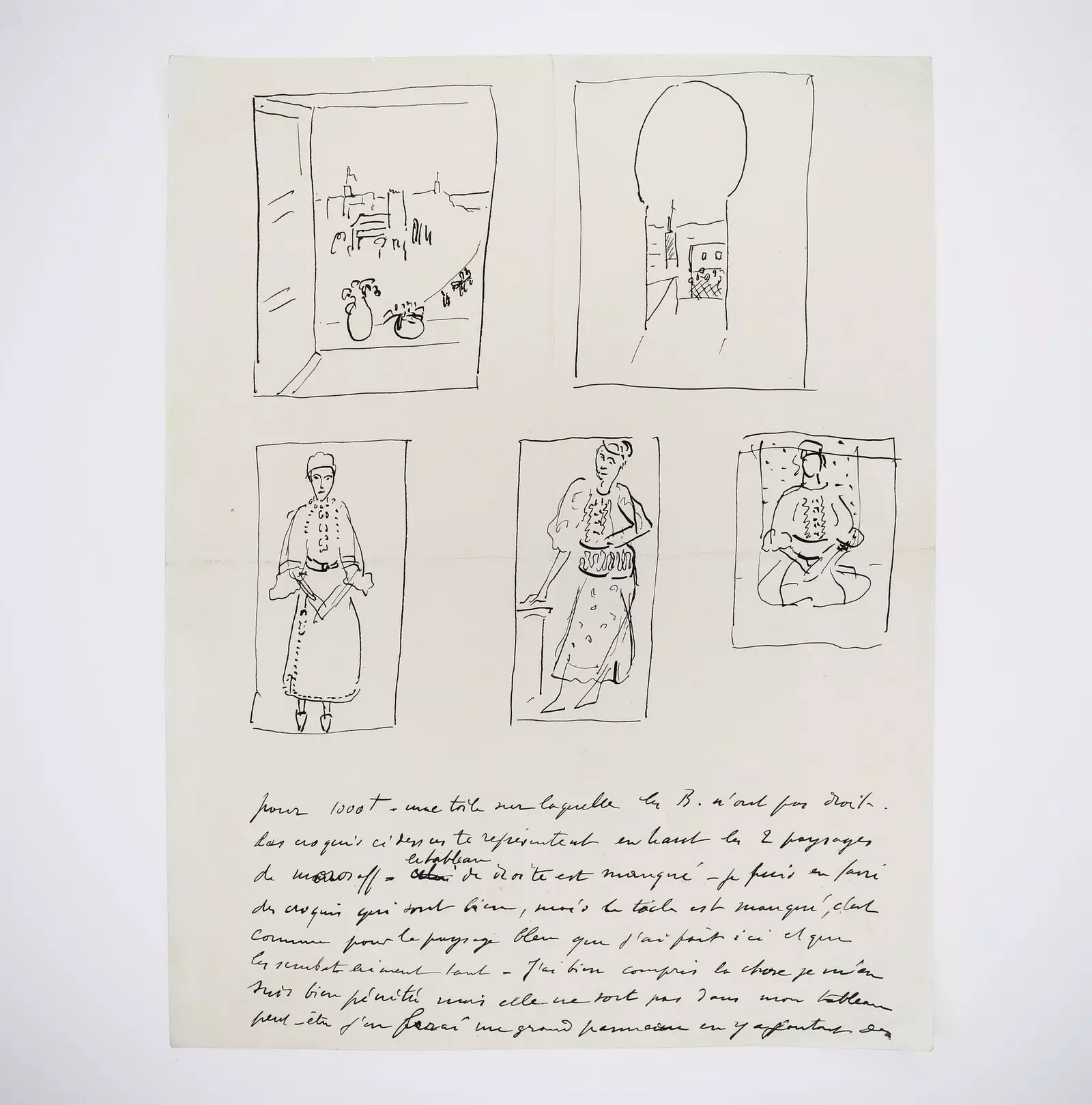
Matisse related to his wife all his trips through Morocco with countless sketches (November 1, 1912).
They do not miss the opportunity to chat about being an artist , another of the great chapters of the exhibition and in which more sketches and paintings can be seen between the lines. Matisse, for example, intends to transfer his wife Amélie to Tangier while he is in Morocco , with a multitude of sketched images of the place.
“The Thames was pure gold. How beautiful it has been, by God… So much so that I have started to work with a frenzy, following the sun and its reflections in the water.” Claude Monet to Alice Hoschedé, February 3, 1901.
In the last episode, the most complete, art lovers will be able to make their own historical tour of impressionism . It is logical that, in the correspondence between artists, art critics and other personalities related to this discipline, it was used to address questions about current movements.
Although personal themes of the protagonists can be read, they also leave room to create a kind of gathering in which Pissarro writes to Gauguin about the news with respect to Monet, Degas or Guillaumin; discuss about The critics that were beginning to appear in the press or, simply, to share that admiration for lights and colors , as Van Gogh does in a letter to Émile Bernard in 1888.
The Thyssen Museum, together with Anne-Marie Springer, has been able to prepare a route that involves the public in the daily life of great artists. So much so that they have even collaborated with the Royal School of Dramatic Art to record in audio format a selection of the exposed letters.
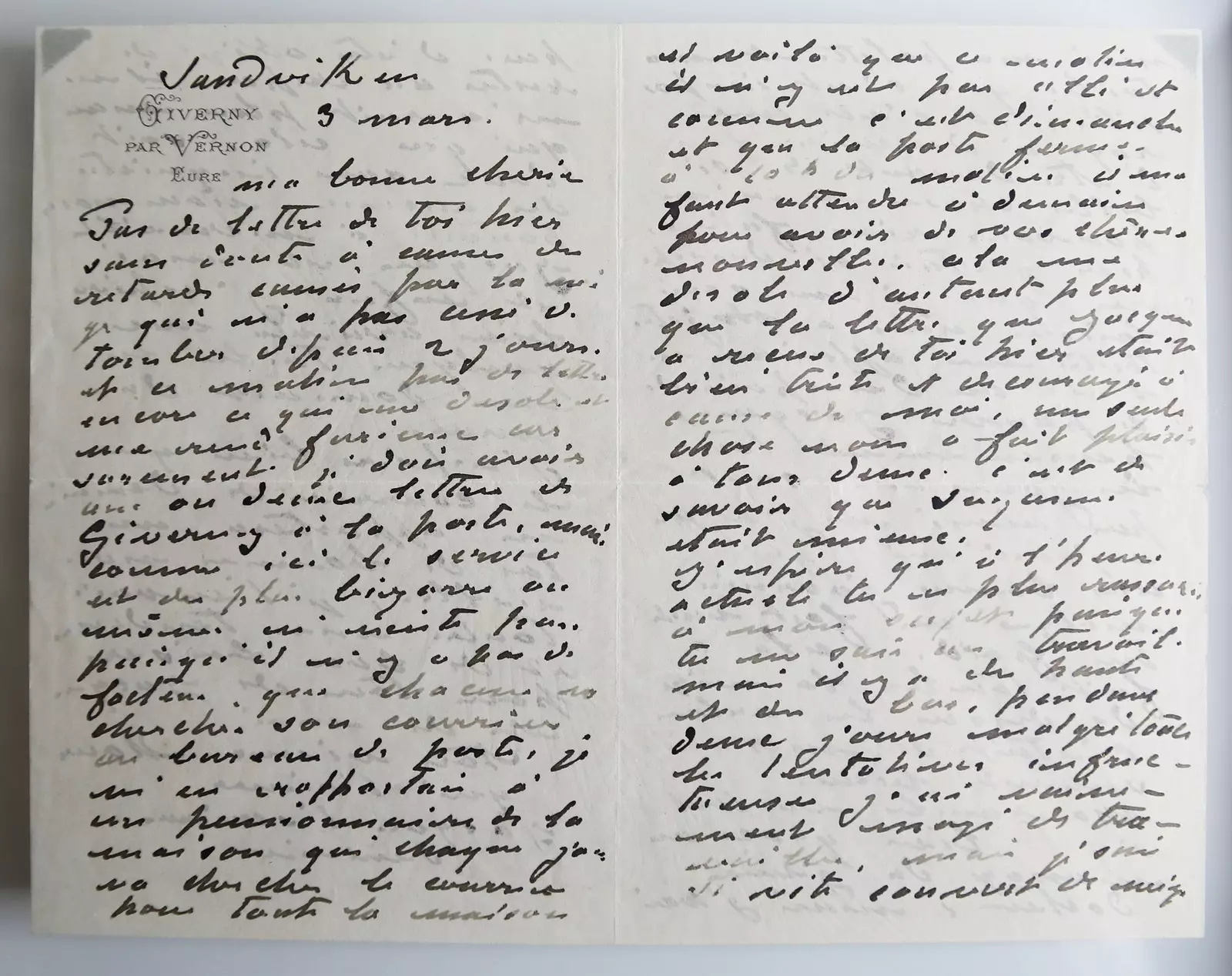
Monet wrote to his second wife, Alice, about the difficulties he was going through, her walks in London or his social gatherings (March 3, 1895).
The works of painters have been making us dream since their creation, this is how the power of art works. Now we can also fantasize about their lifestyles , their conversations, joys, anger or sadness, traits of their most intimate personalities that they bring us closer to them and their work.
The letters have always been one of the greatest representations of love , an eternal symbol embodied in novels such as The Sorrows of Young Werther or in films such as Letters to Juliet. Perhaps this exhibition is not only about looking (or rather, reading), but also about recovering old customs. How long has it been since you wrote a letter?
